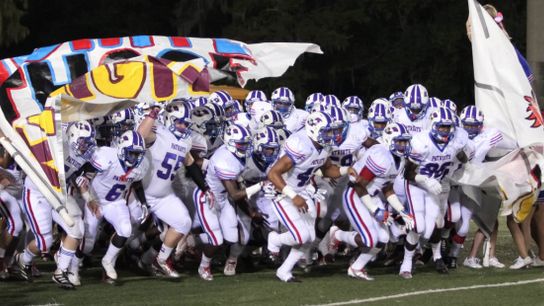One hundred percent of high school coaches, administrators, parents and athletes can agree head injuries are a major issues that should be treated with the utmost seriousness, but not all players agree on the most basic step in dealing with concussions: reporting them.
According to a study in the Journal of Athletic Training (via the Charleston Post and Courier), more than half of players said they have purposefully hid concussions or would if put in the situation:
Fifty-five percent of high school athletes said they didn’t or wouldn't report a concussion. The most common explanations given by those athletes were not wanting to lose playing time, not thinking the injury was serious enough to require medical condition, and not wanting to let the team down.
The stated reasoning for not reporting concussions comes from three motivations:
1) Self-preservation. "I don't want to lose playing time."
2) "Team-first" thinking. "I don't want to let the team down."
3) Ignorance. Not knowing how to detect they may have a concussion.
Coaches can provide guidance and leadership on all three of these issues. Just as playing on a sprained ankle hurts the player and the team in the short- and long-term, so, too, does playing with an undiagnosed and untreated concussion. That starts with stressing the message, clearly and repeatedly, to the entire team but especially to players whose actions and attitudes influence the rest of the locker room.
As for the third issue, I won't lay that one at players' feet. Speaking for myself, I may or may not have played through concussions in my (incredibly mediocre) playing career. I was never taught how to tell if I may have a concussion, so I had no idea when to report one.
Many players are in that same situation today. The safest and easiest way to prevent that is to have a athletic trainer on hand that can train players how to tell if they may have a concussion and to provide a trained, dedicated set of eyes focused on nothing other than players' safety.
Unfortunately, not all athletes have that opportunity. In fact, the Journal stated 63 percent of high school programs do not employ a full-time athletic trainer and 30 percent don't have trainer coverage at all. Obviously, very, very few of those programs going without do so because they want to be short-staffed, but ensuring proper medical coverage -- especially on this issue -- should be a top-line priority in action and in budget.
